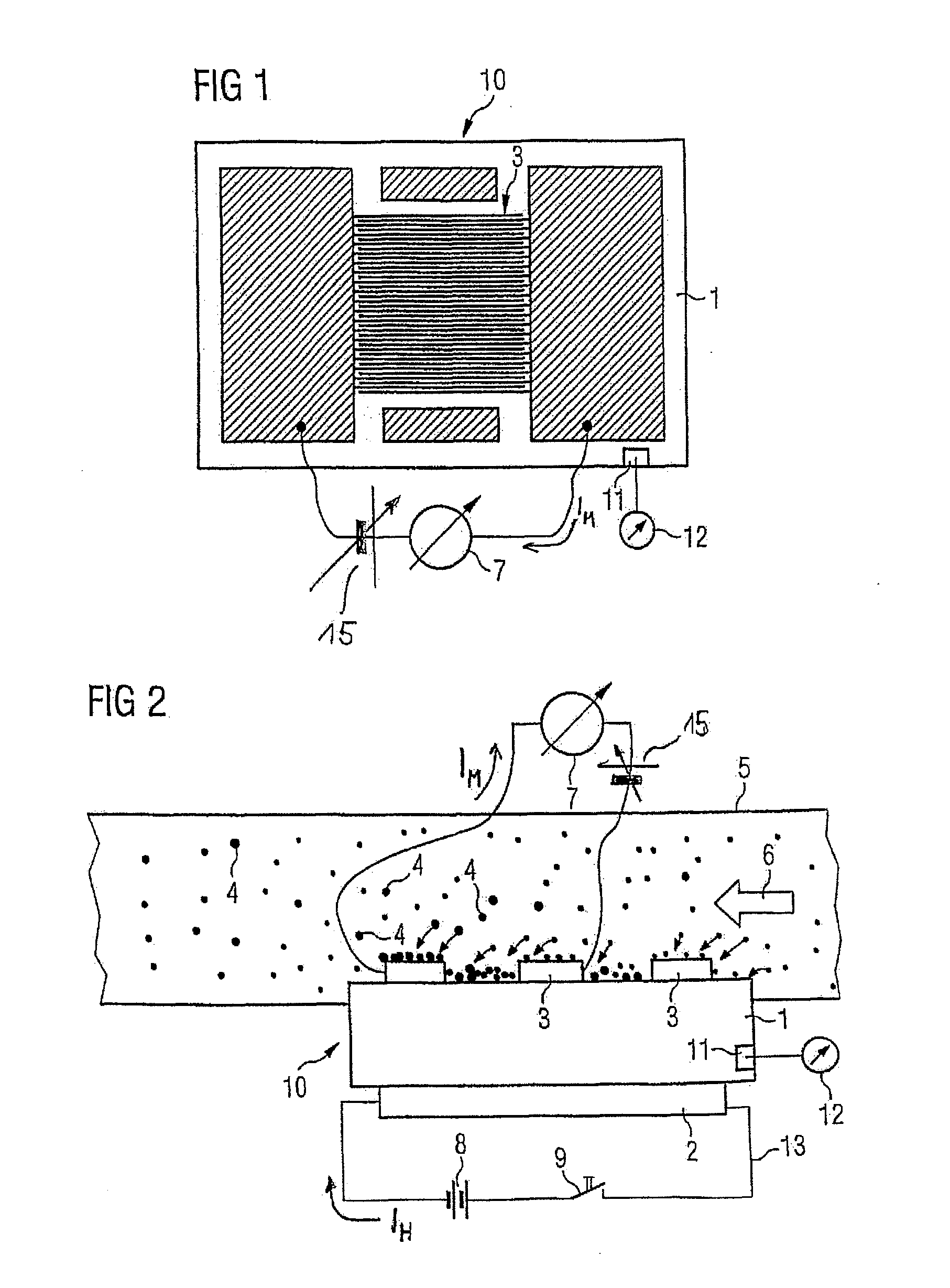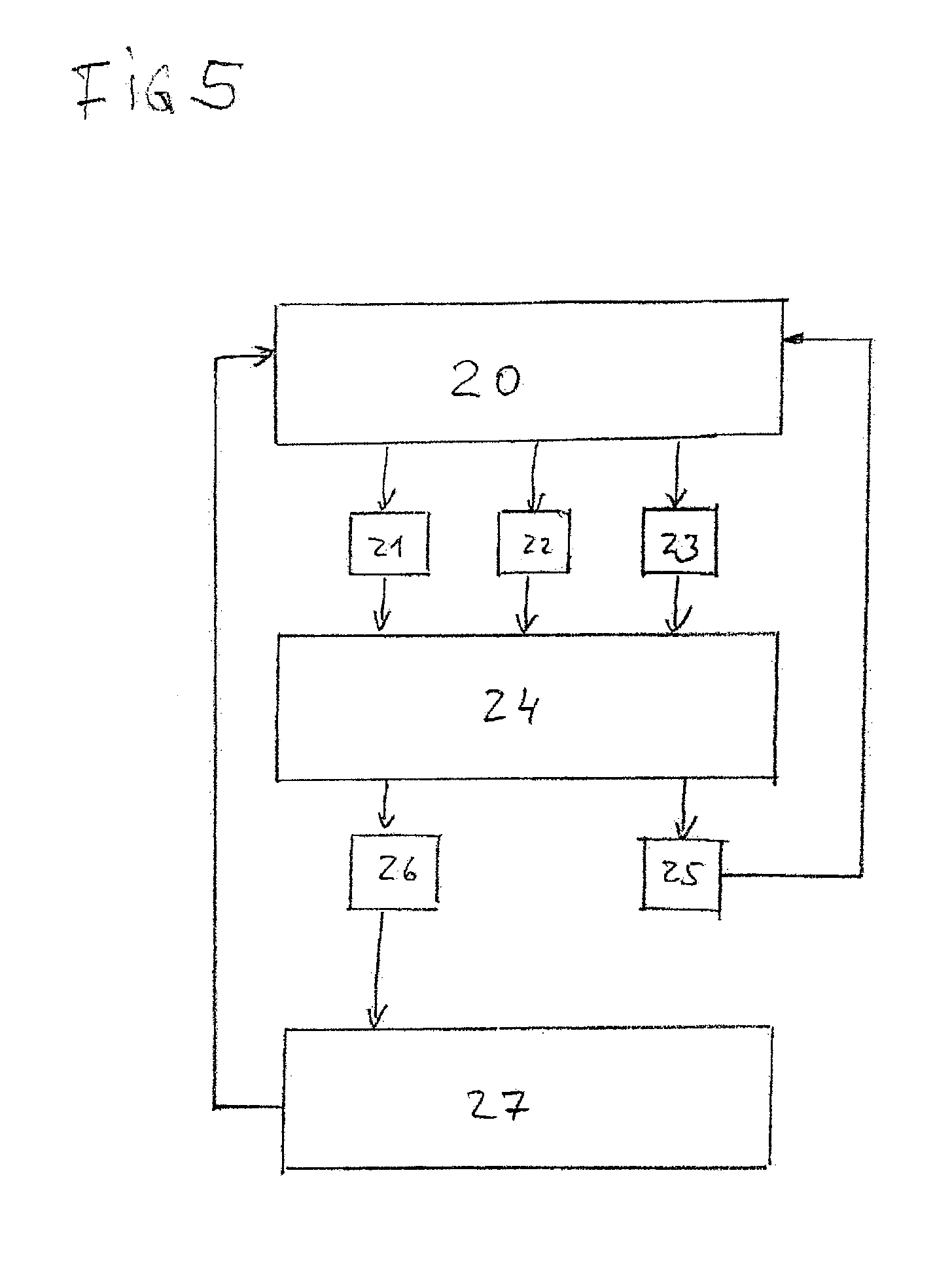Method for operating a soot sensor
- Summary
- Abstract
- Description
- Claims
- Application Information
AI Technical Summary
Benefits of technology
Problems solved by technology
Method used
Image
Examples
Embodiment Construction
[0030]FIG. 1 illustrates a carbon particulate sensor 10 that is embodied from a molded body 1, a heating element 2, and a structure of measuring electrodes 3 that engage one with the other in an interleaved finger manner. The molded body 1 can be produced from a ceramic material or can be embodied from a different material that comprises electrically insulating properties and resists the temperatures involved when burning off carbon particulates 4. In order to burn off the carbon particulates 4 from the carbon particulate sensor 10, the carbon particulate sensor 10 is heated to temperatures between 500° C. and 800° C. in a typical manner with the aid of an electrical resistance heater. The electrically insulating molded body 1 must be able to withstand these temperatures without being damaged. The structure of the measuring electrodes 3 is embodied in this case by way of example as a mesh-like structure that is also described as an interleaved finger electrode structure 3, wherein a...
PUM
 Login to View More
Login to View More Abstract
Description
Claims
Application Information
 Login to View More
Login to View More - R&D
- Intellectual Property
- Life Sciences
- Materials
- Tech Scout
- Unparalleled Data Quality
- Higher Quality Content
- 60% Fewer Hallucinations
Browse by: Latest US Patents, China's latest patents, Technical Efficacy Thesaurus, Application Domain, Technology Topic, Popular Technical Reports.
© 2025 PatSnap. All rights reserved.Legal|Privacy policy|Modern Slavery Act Transparency Statement|Sitemap|About US| Contact US: help@patsnap.com



